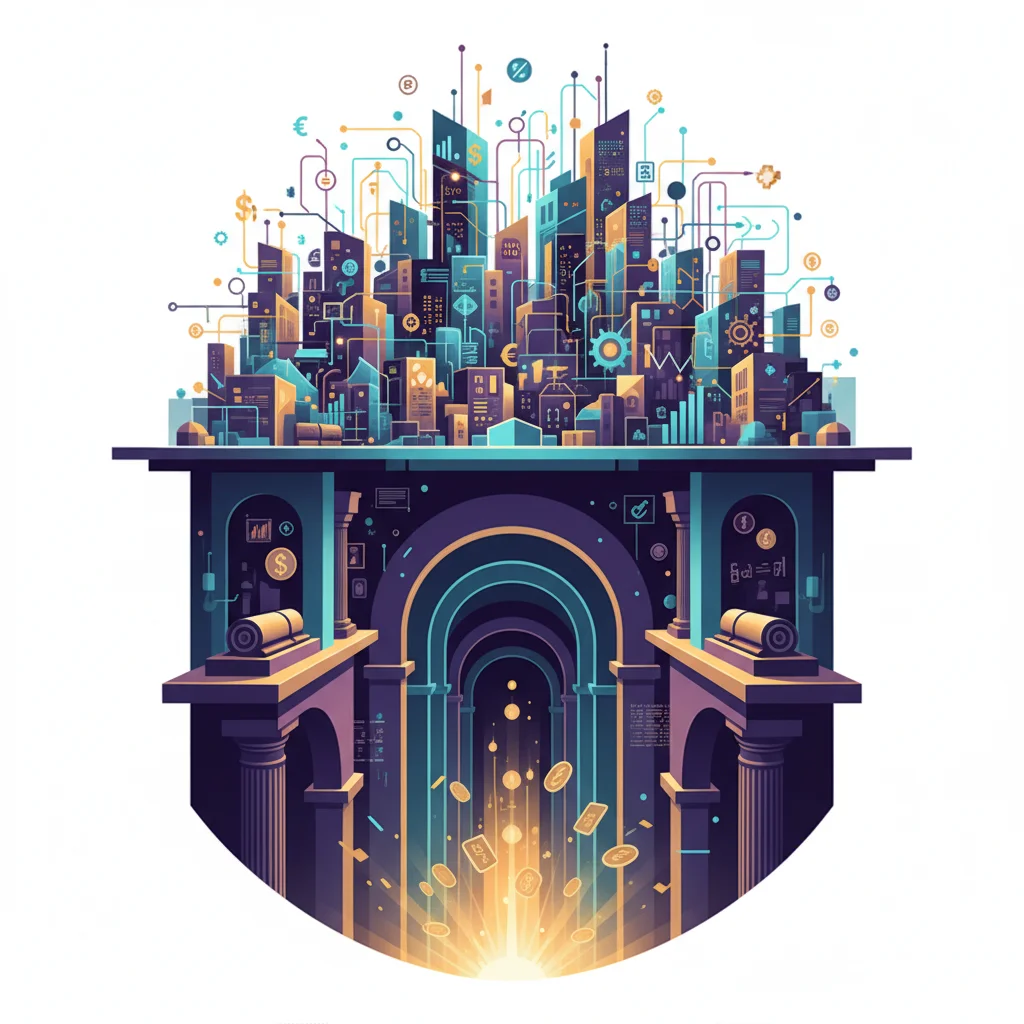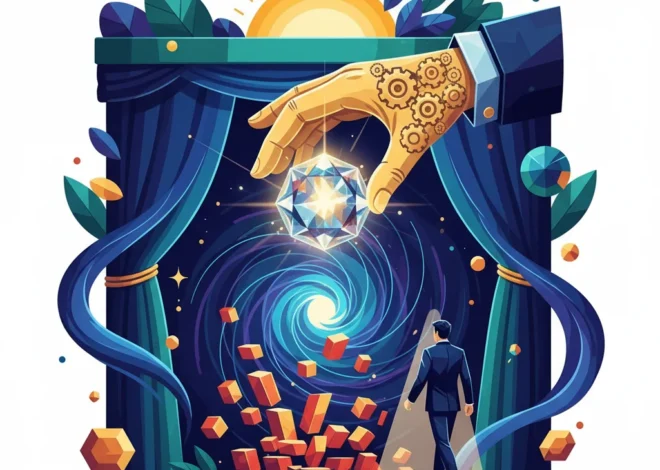
The Catacombs of Capital: Unearthing Ancient Lessons for Modern Finance
To stand at the entrance of one of Rome’s ancient catacombs is to stand at the precipice of another world. As you descend from the vibrant chaos of the modern city into the cool, silent earth, you are not merely entering a burial ground; you are stepping into a foundational layer of Western history. These subterranean labyrinths, carved from soft volcanic rock, are a testament to a community whose beliefs were so revolutionary they had to be nurtured underground, away from the rigid, established structures of the Roman Empire.
For the modern investor, financier, or business leader, this journey holds a powerful, if unexpected, parallel. Our own world of finance is a complex, multi-layered system. On the surface, we see the monumental architecture of global banking, the bustling forums of the stock market, and the established highways of capital flow. But beneath this surface, new systems are being carved out. Revolutionary ideas are taking root. To truly understand the future of the economy, we, too, must be willing to go underground and explore the foundational principles that drive enduring value and disruptive innovation.
Legacy Systems and Disruptive Tunnels: A Lesson in Financial Architecture
The Roman Empire was a marvel of infrastructure. Its roads, aqueducts, and legal systems were the bedrock of its power—the centralized, top-down architecture of its era. Yet, the catacombs exist precisely because this official system could not accommodate the needs of a burgeoning Christian community. They were, in essence, a decentralized solution to a centralized problem. According to historical records, there are more than 60 known catacombs in Rome, creating a network of tunnels stretching for hundreds of kilometers (source).
This mirrors the current state of financial technology. For decades, traditional banking has operated on legacy systems—powerful and reliable, but often slow, expensive, and exclusionary. Like the Roman roads, they were built for a different era. Enter fintech. Startups in payments, lending, and wealth management are carving out new tunnels, serving communities and needs the monolithic incumbents have overlooked. They are building a parallel infrastructure that is more agile, accessible, and aligned with the values of a digital-native generation. Just as the catacombs offered a new model for community and faith, today’s fintech innovators are challenging the very definition of a bank.
This dynamic presents a critical insight for investors: while the monumental “imperial” institutions seem unassailable, the most significant growth often originates in the “catacombs” of the market. Identifying these emerging networks before they break ground is the key to capturing asymmetric upside. Beyond the Pitch: Maccabi Tel Aviv's Decision as a Masterclass in Geopolitical Risk and Financial Prudence
The Genesis Block of Belief: Ancient Symbols and Modern Blockchain
Wandering through the narrow passages of the catacombs, you encounter a secret language of symbols etched into the walls: the fish (Ichthys), the anchor, the good shepherd. For early Christians, these were more than mere decorations; they were a cryptographic system. In a time of persecution, these symbols served as a shared, immutable ledger of belief, instantly recognizable to members of the community and opaque to outsiders. Each symbol was a “transaction” of faith, a block of data confirming a shared identity and value system.
This is, conceptually, the heart of blockchain technology. A blockchain is a distributed, immutable ledger. Its foundational “genesis block” is the anchor for every subsequent transaction, creating a chain of trust that doesn’t require a central authority. The symbols in the catacombs were an early, analog form of this principle. They established a consensus of belief among a distributed network of people, allowing them to coordinate and build a resilient community without the approval of the Roman state. The frescoes and carvings were, in a sense, the first “smart contracts” of a new social and spiritual protocol, as noted by observers of their intricate designs (source).
For those in the world of finance, the lesson is profound. Blockchain and other distributed ledger technologies are not just about creating new assets; they are about creating new systems of trust. They allow us to build financial networks based on cryptographic certainty rather than institutional reputation alone—a paradigm shift as significant as the one that unfolded in these Roman tunnels two millennia ago.
Comparing Ancient Foundations with Modern Financial Structures
To crystallize these parallels, consider the following comparison between the structures of the Roman world and the architecture of our modern economy. Each layer reveals a timeless principle relevant to today’s investment strategies.
| Ancient Roman Concept | Modern Financial Analogy | Key Takeaway for Investors |
|---|---|---|
| The Catacombs | Decentralized Finance (DeFi) & Fintech Startups | Look for innovation at the fringes of the established economy; these are often the areas of highest growth potential. |
| Roman Aqueducts | Centralized Banking Infrastructure (e.g., SWIFT, Fedwire) | Powerful and essential for stability, but vulnerable to single points of failure and slow to adapt to new market demands. |
| Early Christian Symbols | Cryptographic Hashes / Blockchain Data | Represents a secure, immutable, and shared source of truth that can build resilient communities and markets. |
| Layers of History (Pagan, Christian, etc.) | Economic Cycles & Stock Market Trends | Understanding past cycles is crucial for navigating future volatility. Do not build on unstable or outdated foundations. |
Navigating the Labyrinth: Due Diligence in a Complex Market
The catacombs are not an open field; they are a bewildering labyrinth. Without a guide, one could easily become lost in the endless, intersecting corridors. This complexity was a feature, not a bug, offering protection to the community that built them. The darkness and uniformity of the passages demand careful navigation and an expert understanding of the terrain.
This is a perfect analogy for navigating today’s financial markets. The sheer volume of information, the proliferation of complex derivatives, the algorithmic speed of trading, and the cacophony of market commentary create a labyrinth for the modern investor. Surface-level analysis—reading headlines, glancing at a stock chart—is like wandering into the catacombs without a map. True alpha is found by those willing to conduct deep due diligence. This means going “underground”: reading the footnotes of financial statements, understanding a company’s competitive moat, analyzing the quality of its leadership, and stress-testing its business model against macroeconomic shifts. It requires a guide, whether in the form of a trusted advisor, a rigorous analytical framework, or years of accumulated experience. Many of these historical sites were rediscovered centuries after being forgotten, a reminder that value can remain hidden for long periods (source).
BHP's Paradox: Why the World's Biggest Miner is Bullish Amidst China's Economic Storm
Preservation and Enduring Value: A Final Lesson in Economic Longevity
Perhaps the most awe-inspiring aspect of the catacombs is their endurance. For nearly 2,000 years, they have preserved a fragile and invaluable record of art, faith, and human history. They were not built for quarterly returns or a quick exit. They were built to last for eternity.
This stands in stark contrast to the short-termism that pervades much of our modern financial thinking. The obsession with high-frequency trading, quarterly earnings reports, and speculative bubbles often prioritizes immediate gains over sustainable, long-term value creation. The catacombs remind us that the most profound legacies are not built in a day. For business leaders, this is a call to invest in R&D, corporate culture, and customer loyalty. For investors, it is an endorsement of value investing—the patient accumulation of high-quality assets with durable competitive advantages. True wealth is not a fleeting number on a screen; it is the construction of an enterprise or a portfolio that can withstand the cycles of history and deliver value for generations to come.
The Unseen Engine: Is America's Real Skilled Visa Strategy Hiding in Plain Sight?
As you ascend back into the Roman sunlight, the world looks slightly different. The ancient and the modern, the sacred and the secular, no longer seem so far apart. The silent tunnels beneath the city offer a timeless lesson for the volatile world of modern capital: Look beneath the surface. Understand the foundational code. Navigate with expertise. And above all, build for permanence, not just for profit. In the labyrinth of the global economy, the principles that guide us through the catacombs are the very same that can lead to enduring prosperity.


